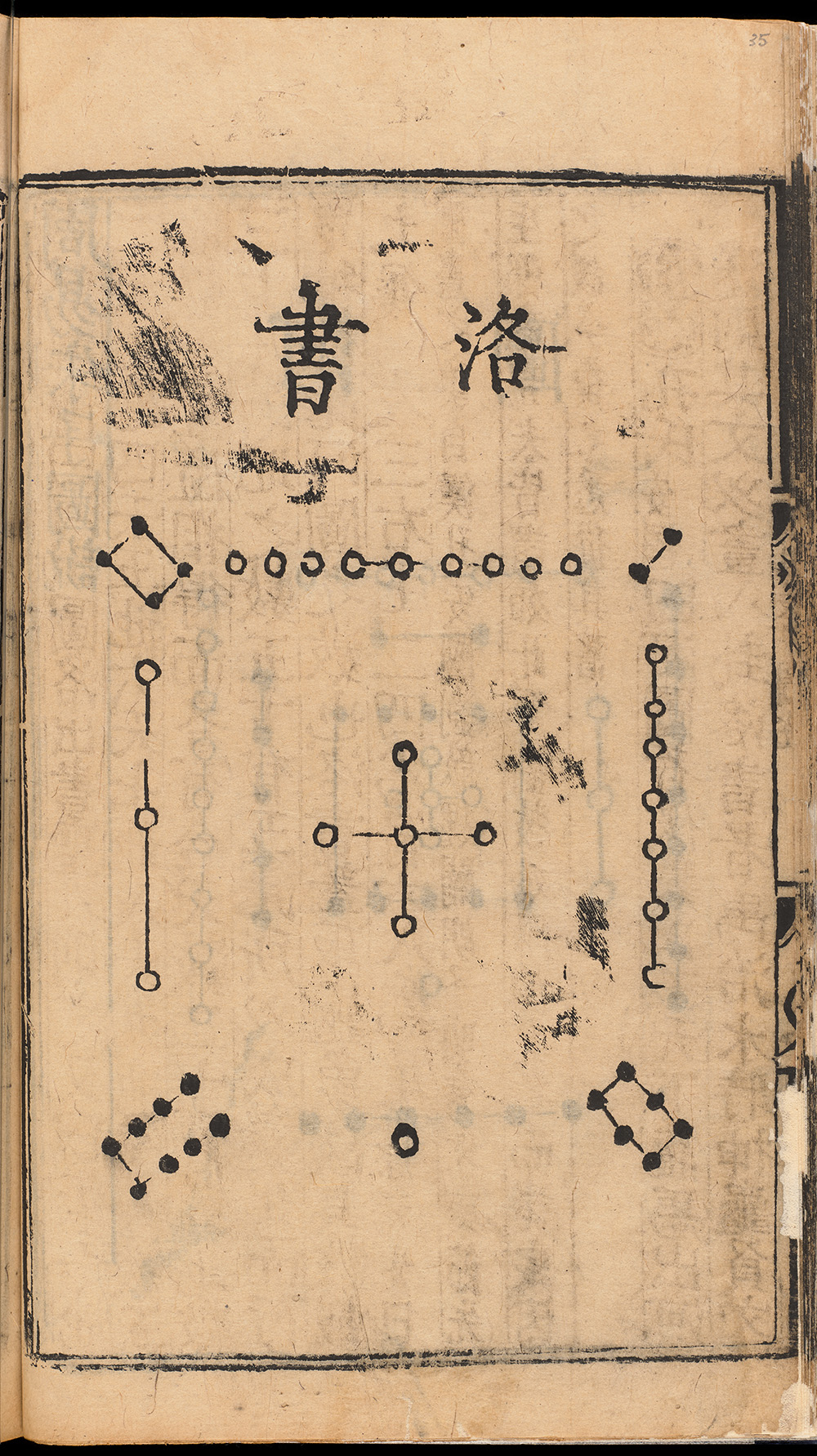 Just in time for the Chinese New Year we can announce that our copy of the Zhouyi zhuanyi Daquan is now available to view on our collections website – here. This is the earliest printed book in our collections, printed in 1440 in the Chinese province of Fujian. Zhouyi zhuanyi Daquan has become known in English as the Complete Commentaries on the Book of Changes. The Book of Changes itself is a seminal work on the subject of Confucianism.
Just in time for the Chinese New Year we can announce that our copy of the Zhouyi zhuanyi Daquan is now available to view on our collections website – here. This is the earliest printed book in our collections, printed in 1440 in the Chinese province of Fujian. Zhouyi zhuanyi Daquan has become known in English as the Complete Commentaries on the Book of Changes. The Book of Changes itself is a seminal work on the subject of Confucianism.

To gain a wider understanding of the context of this particular copy of the Zhouyi zhuanyi Daquan, Dr Stephen McDowall, Lecturer in History, kindly directed me towards his paper for the Journal of the British Association for Chinese Studies (Vol. 4 August 2014). The paper is titled Bibliographical Notes on the Early-Ming Copy of the Zhouyi zhuanyi daquan at the Edinburgh University Library and makes up most of my research for this blog (download in full here). Reading this paper gives a real sense of the journey of this little book and uncovers its cultural and political implications. Here, Dr McDowall explains the significance of the Book of Changes and its relationship to the commentaries that followed, appearing in the 1440 copy:
‘ The sixty-four hexagrams that form the basis of the work are traditionally thought to have been revealed to Fuxi 伏羲, a mythological figure of early antiquity, whose work was continued by King Wen of Zhou 周文王, and subsequently edited by Confucius himself in the fifth century BCE. Although interpretations varied over the course of many centuries, it was generally held that the work contained certain truths about the architecture of the universe, which would be made manifest by the application of proper exegesis. The present version of the text, on which all the major commentaries are based, is believed to have been collated by the great Han scholar Liu Xiang 劉向 _(79-8 BCE), but as with many of the early works, the major commentaries became, over time, as important as the original text, and were themselves subsumed into the canon.’
Our copy of Zhouyi zhuanyi Daquan is incomplete. It is missing the title, table of contents and several other pages, yet it remains one of our iconic items as it represents a key part of early-Ming history. It is not only the meanings and interpretations of the texts that are important. The way in which the 1440 imprint was produced and published also holds cultural relevance. The 1440 edition marked a key moment within the commercial publishing industry in China of that time. Yu Hui, the owner of the publishing company disseminating the 1440 edition, sought to play a role in making these texts more widely available, taking the texts beyond the academies and into the everyday. Despite being relatively expensive, this type of large scale production for the time could be seen as a precursor to the mass publication that occurred in the sixteenth-century.
Using block printing techniques, the texts were printed on to very thin, poor quality bamboo paper. The nature of block printing, and the many different craftsmen involved in the process, meant that deviations from the original texts did occur. Not all of these deviations were necessarily accidents which then created controversy around the issue of authenticity.

This is possibly the most delicate paper I have had the experience of handling so turning each page required much caution during the digitisation process. Thankfully this book is paginated giving me a clue as to the correct orientation of the book. This was however, not the case when it arrived in the library in 1628 (after being gifted by minister, Robert Ramsay), the book was accidentally bound upside down and remained that way until 2013- very vexing for the library staff!
John Bryden
Assistant Photographer
Postscript- we are currently experimenting with iiif for the display of complete books, this has the advantage that we can build a manifest to order the pages of the book correctly. An example of this for this book can be seen here although this is currently not a permanent url.
Susan Pettigrew, Photographer
Be First to Comment